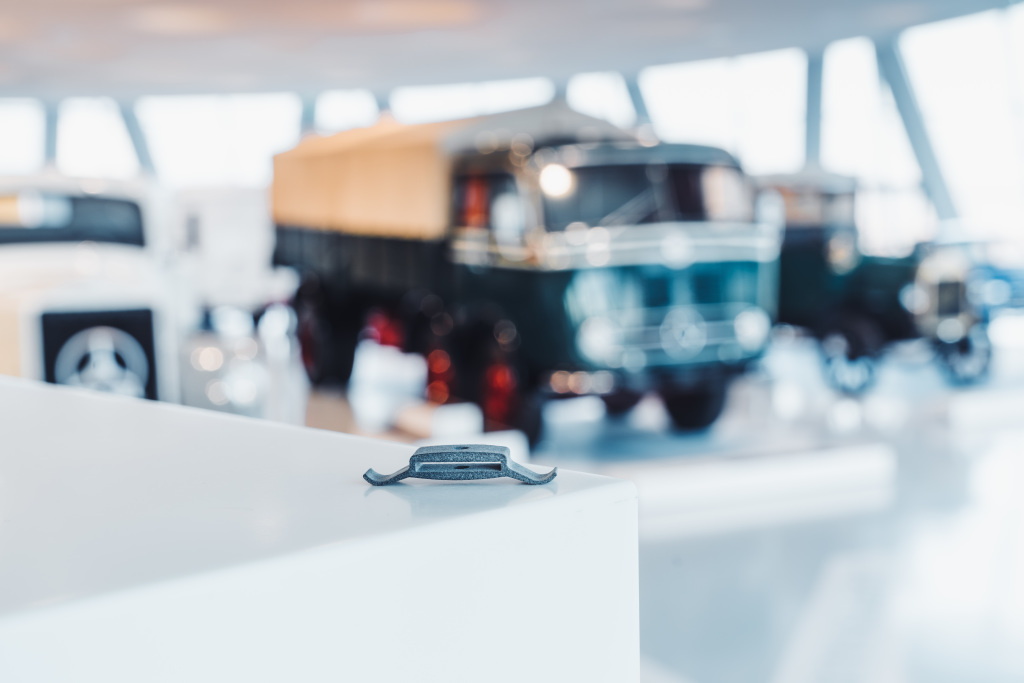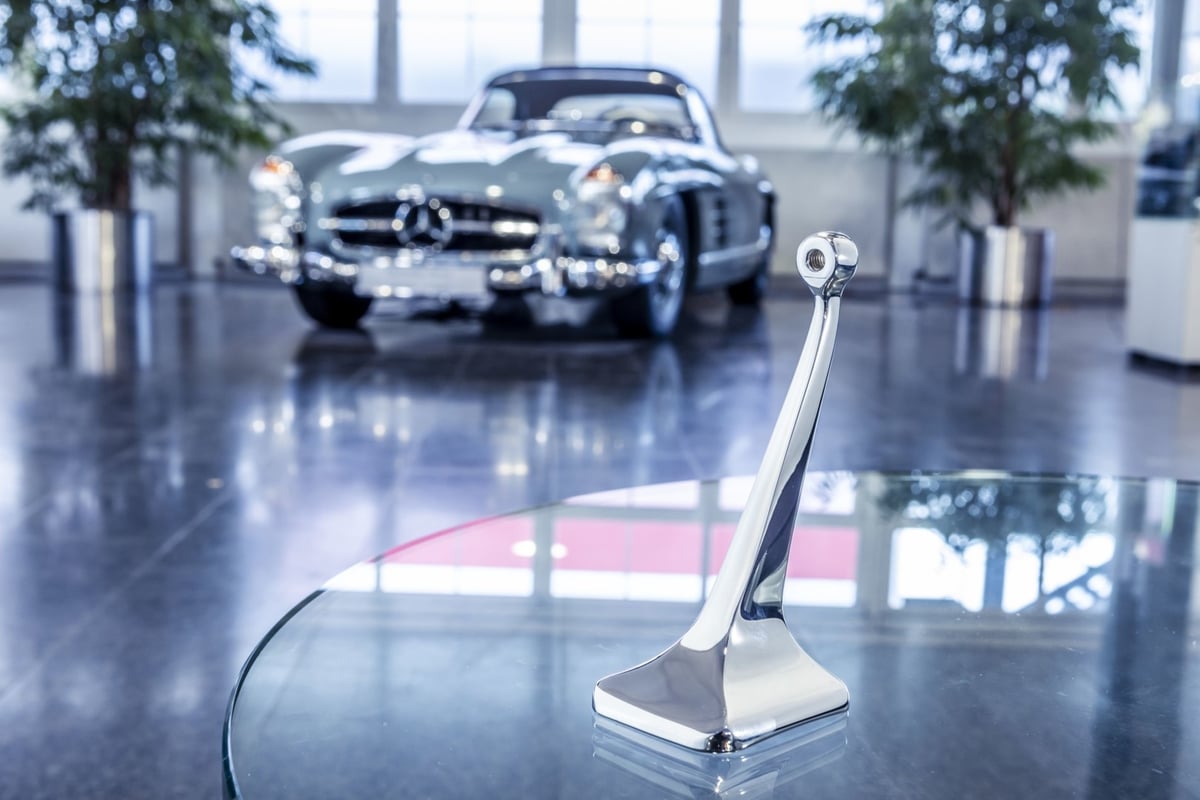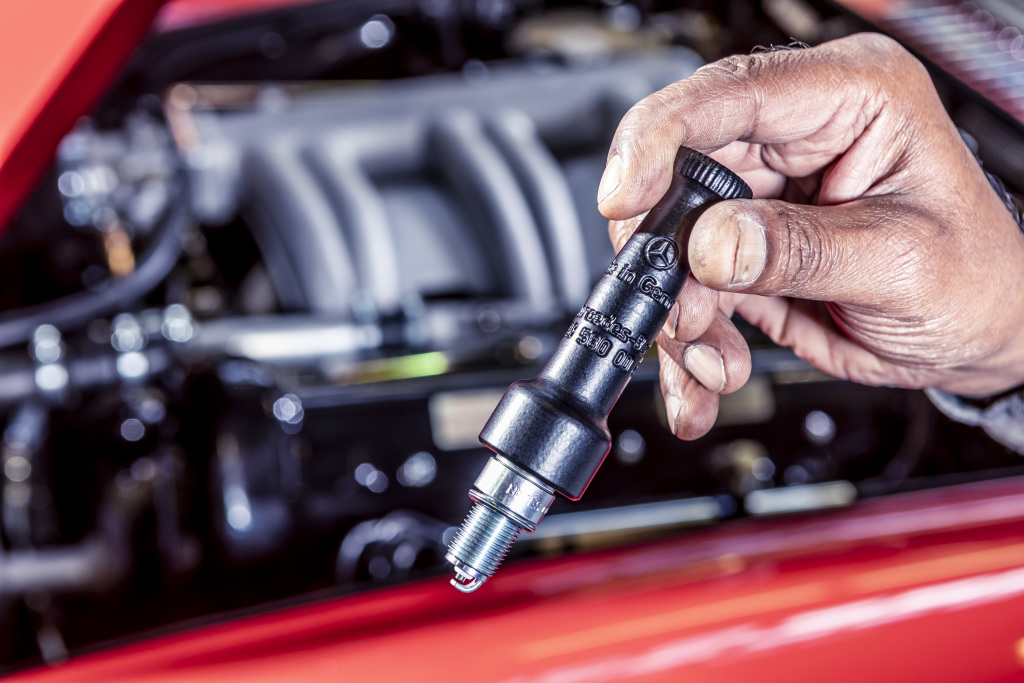Anyone who owns a classic old car will know the irritating and oftentimes expensive process of searching for replacement parts. The reason for this irritation is that many parts for antique cars aren’t manufactured anymore and therefore, are incredibly hard to come by. Thankfully, additive manufacturing has presented itself as an effective solution for producing out-of-production components.
Mercedes-Benz has been utilizing 3D printing technology to offer replacement prints for its cars since 2016. Now, the German automotive pioneer has developed a line of 3D printed replacement parts that have passed its strict quality assurance with flying colors.
For its latest project, Mercedes-Benz has coined the phrase “Future meets Classic.” The range of 3D printed parts includes the inside mirror base for the Mercedes-Benz 300 SL Coupé (W 198 model series), the spark plug holder from the toolkit of this iconic sports car, as well as the sliding sunroof rollers for the W 110, W 111, W 112 and W 123 model series.
3D printing technology enables the luxury car manufacturer to create small quantities of a part only when needed, saving a lot of money for both the company and customer. Furthermore, prints can be complex and made to look exactly like the originals, while also taking much less time to produce. This allows Mercedes-Benz to maintain the genuine quality of parts and authenticity of its legendary brand.

“Future Meets Classic” Parts Offer a Genuine Look and Improved Functionality
Mercedes-Benz explains that with 3D printing, the team has been able to close the “gaps” in the replacement part supply of classic vehicles. Better yet, the new components are being made from the same materials as the originals, meaning that the look and performance of the replacement parts meet the company’s high standards.
Take the mirror base of the 300 SL Coupé for example, which is made from a 3D printable aluminum alloy. Another benefit of using 3D printing is that the functionality of the parts can be slightly modified to increase road safety. For the 3D printed mirror base, the Mercedes-Benz team has increased its size to ensure it sits a little higher, providing the driver with a better view.
To create the replacements, the team first starts by creating a 3D dataset. Depending on how old the original parts were, they need to do this from 2D drawings. After the 3D models have been created, the team uses a sintering or smelting powder bed printing process. This process means it’s possible to create parts with various materials, including both plastics and metals.

Mercedes-Benz Classic is working with the company’s Group Research in 3D Printing team. As a result of this “intensive cooperation”, we’ll see a continuous expansion of the replacement part Future meets Classic range. The replacement parts will be available from the service partner via the Mercedes-Benz Classic Center.
Future replacement parts will include everything from engine components to plastic seals and small rubber parts. The company elaborates further in a recent press release:
“Together, even very sophisticated and complex component parts, e.g. an instrument housing, are tested. The individual parts of the instrument housing are to be manufactured with the corresponding optimum production process. 3D printing especially shows its advantages when conventional processes for small quantities reach their technical or economic limits.”
You can learn more about the latest replacement parts on the Mercedes-Benz website.

License: The text of "Mercedes-Benz is 3D Printing Genuine Replacement Parts for Classic Cars" by All3DP is licensed under a Creative Commons Attribution 4.0 International License.